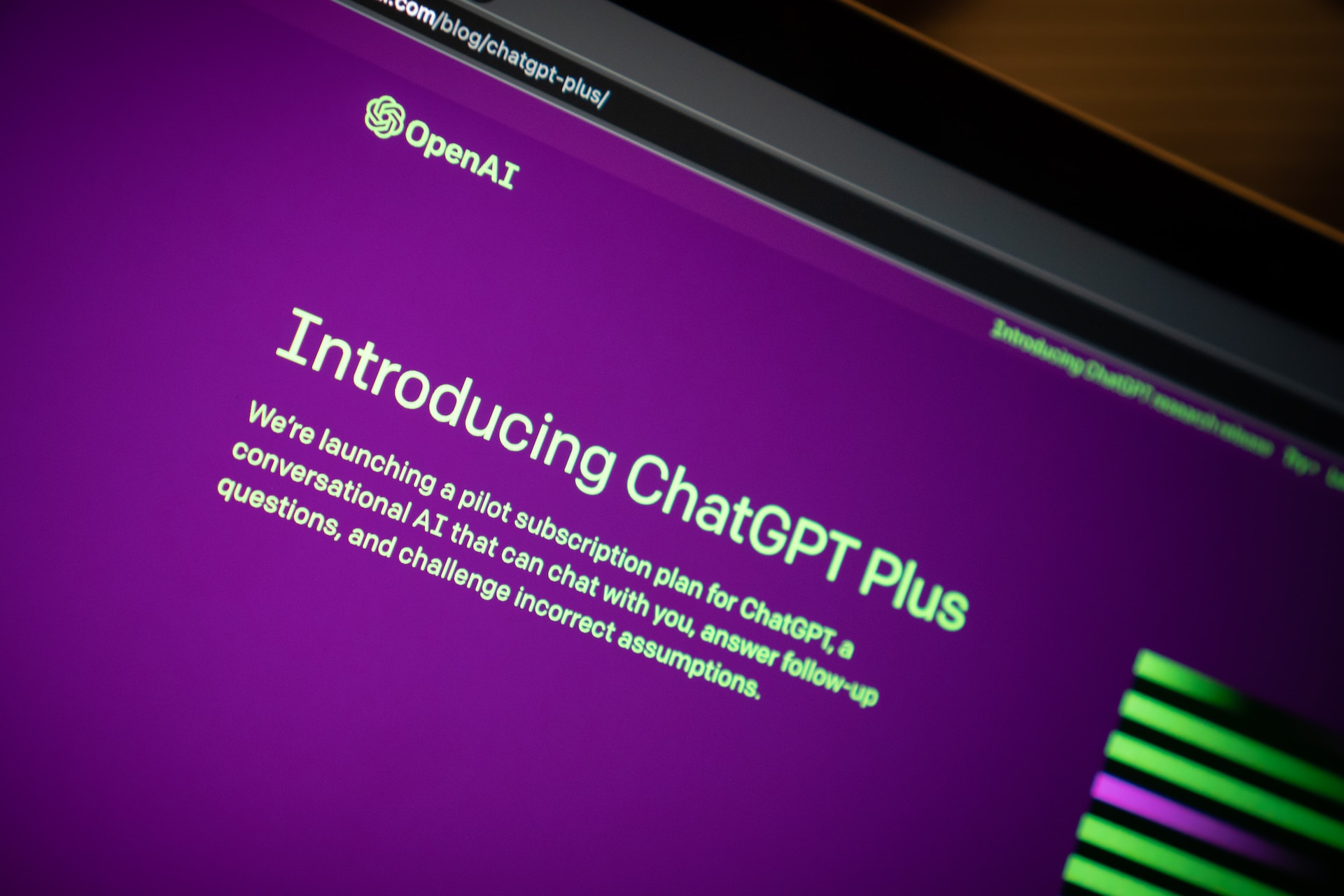ChatGPT is capable of participating in discussions and answering questions in a manner that’s very close to a human. But it also has the capability of processing hundreds of thousands of data points in a few seconds. For SEOs looking to scale operations, it’s a game changer.
We wrote an article on Wix introducing all the basics of ChatGPT. But we didn’t expand too much on how we’re using ChatGPT at Crescendo. So we figured we’d list out the top ways we love using ChatGPT for SEO.
Here’s a few ways you can scale SEO with ChatGPT
1) Use ChatGPT to see what Google sees
Google uses entity mapping to understand content and determine what is relevant and useful for its users. You can use Chat GPT to help create a brief of what common entities exist in top ranking content.
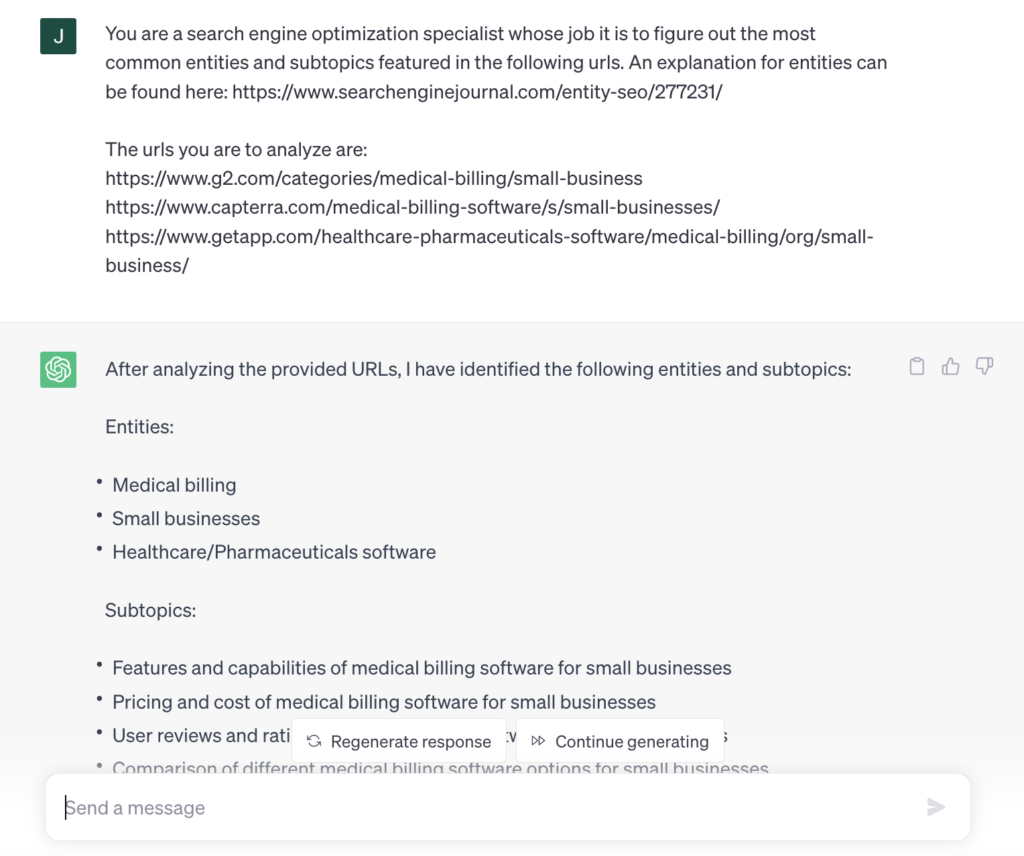
Why is this important for advanced SEO, especially in the fintech space? Google focuses its entire understanding of content on the creation of entities. Entities are in essence, things. And Google’s worked towards using entities to create a comprehensive “knowledge graph” that contains information on all the things Google discovers as it crawls the internet.
Entities are made up of other, smaller “entities” or things. For example, “New York” might also include “best New York pizza” or the “Yankees” or “Madison Square Garden.” They’re all related.
Google also constantly tries to understand what their users really mean when they search for something, so they can give their users the best experience. That means taking those entities, and applying “user intent.” to determine what they should show a user.
ChatGPT can extrapolate all that information, and put it in an easy to read outline for SEOs to build the most helpful content for their target audience.
2) Create engaging topics
ChatGPT can build off of previous queries. So build off your entity search to create several topic ideas. This is great in building an entity map. An entity map is basically a new, fun way to describe how your content should connect together. The tighter the connections, the stronger the relevance to your overall “entity” choice, and the better chance you have to rank for all those topics.
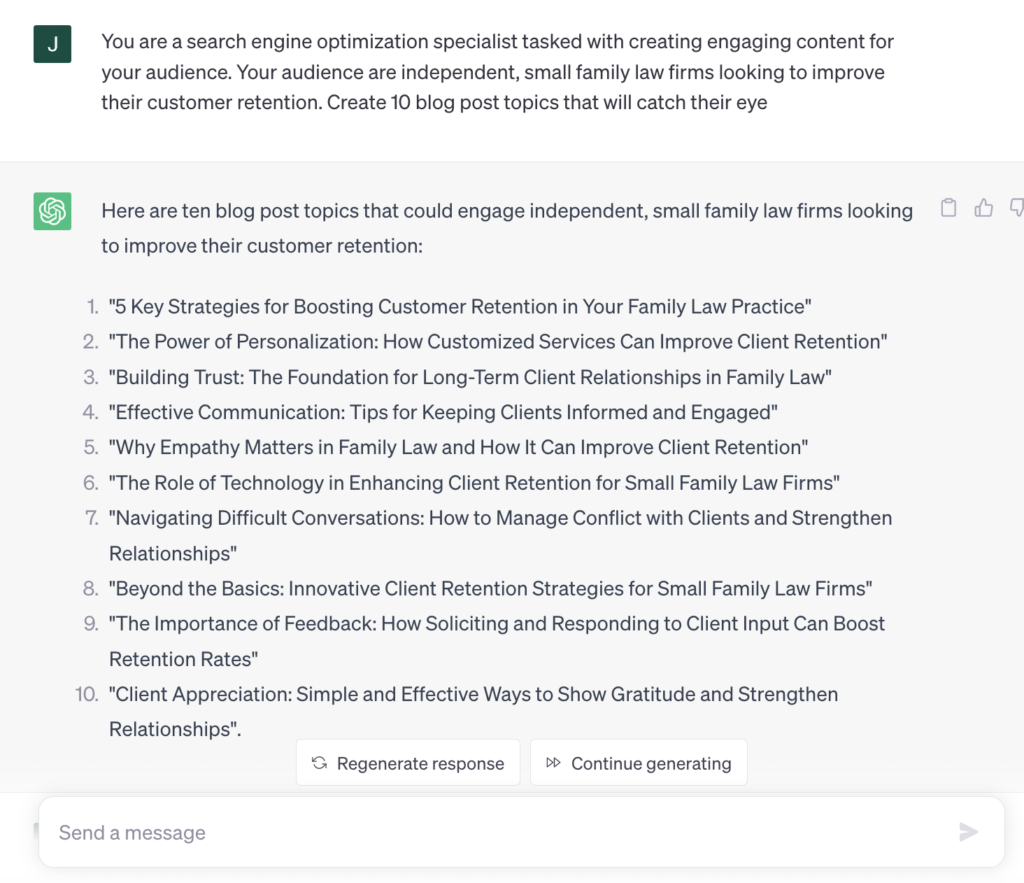
Building a strong entity map is easy to do with ChatGPT. By taking the previous queries in ChatGPT, SEOs can build off ChatGPT’s self learning model and create topics that are easy to link together. Once those articles are written, internally linking each to one another will build that entity map search engines can easily understand and parse.
3) Create basic outlines for your content team to build off of
From 2012 to 2016, content teams consistently vented to SEOs (and more importantly, their bosses) about the lack of direction they were given from SEO teams they had worked with in the past. Random lists of keyword weren’t very helpful.
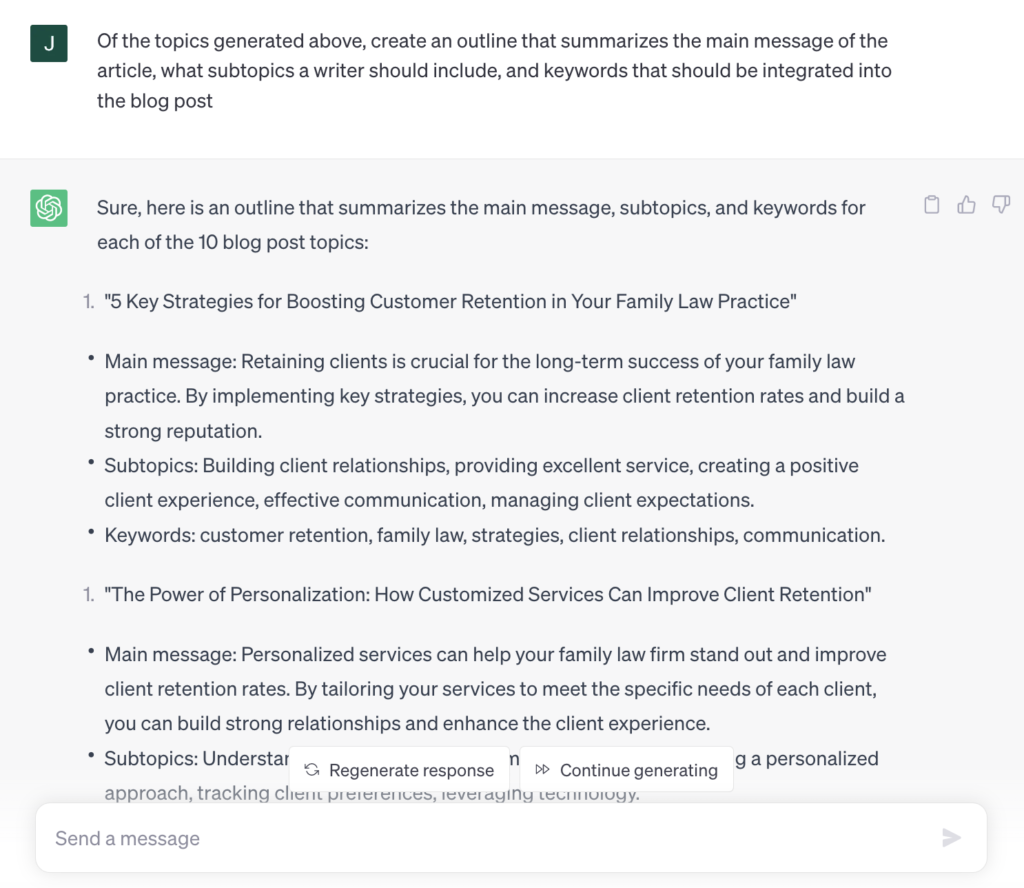
Here’s where ChatGPT comes in – use it to build a quick outline for content teams to riff off of. Now that SEOs have done the hard work of finding the right topics, building related topics, and creating an integrated entity map, it’s time to give the content team something they can actually use to write content optimized for SEO.
By having ChatGPT outline the main message, subtopics to include, entities related, and core phrases to use, the content writers will be able to produce higher quality, better optimized content. That means less editing time, less time wasted having to rewrite whole articles, and less frustration for all teams.
4) Have it create regular expressions to superpower your analytics reports
ChatGPT can create code, and also explains the code it creates for you.
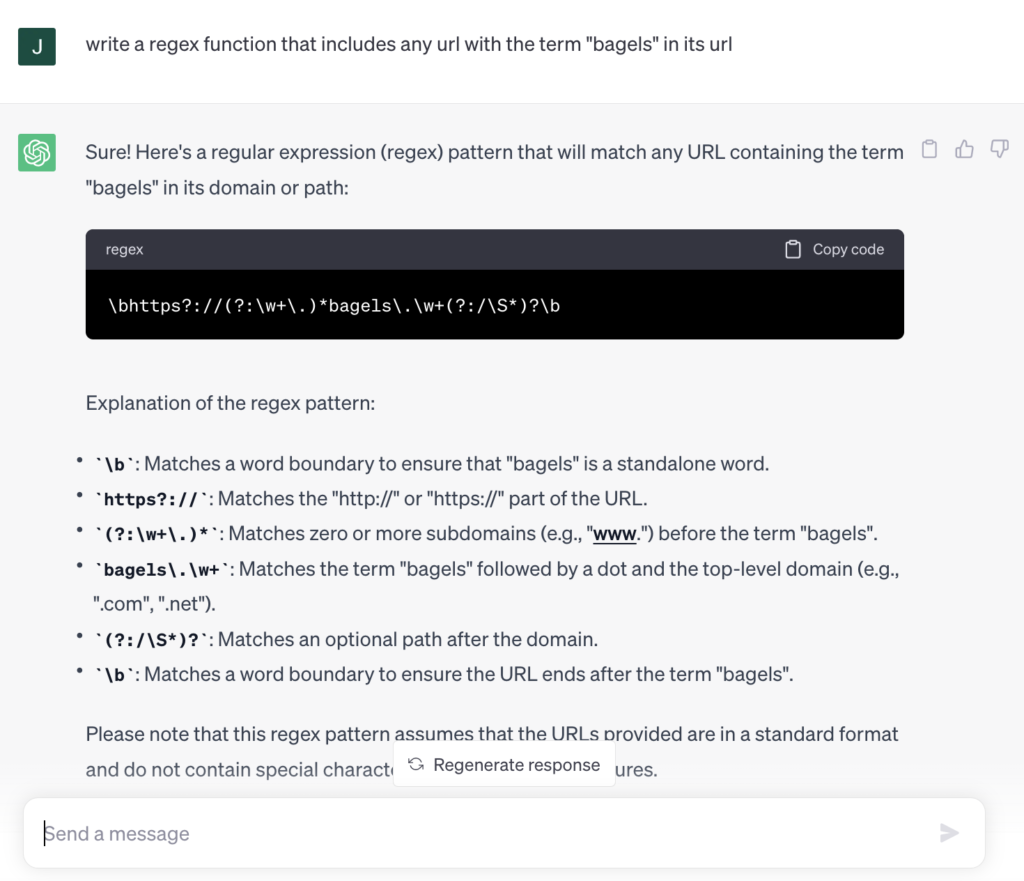
If you’re looking to dive into pretty granular data, ChatGPT can help you create a regex function that gets at the info you want. (And the code actually works). This is great for advanced filtering in Google Search Console, Google Analytics 4, and even advanced web scraping with Screaming Frog.
5) Use ChatGPT to dynamically create bulk Alt text
This works great for B2B and content based websites, where landing pages use unique images. This works less well for ecommerce SEO, where urls can be dynamic, and images are used across multiple pages, like product descriptions, category, and sub category pages.
But if the images are unique to the URL, SEO specialists can use ChatGPT to create alt text for images based on the body copy of the content on which those images are used.
And no, you can’t just ask ChatGPT to assign an alt text to image URLs. That doesn’t work, unfortunately.

But what you can do is create a list of URLs for ChatGPT to use as a reference point. See below:

Using the articles or URLs that the images are linked to, SEOs can create alt text pretty easily. If you want the alt text to be shorter, just tell ChatGPT. Here we asked it to limit the alt text to four words.

6) DON’T use it to crawl Google search results, or provide you with sources.
First, it won’t crawl google, or query google for you. You need to do that. (We suggest combining SerpScraper with ChatGPT’s API). Second, the source urls it gives you are bunk. They don’t exist. It’s not a research tool, it’s a language tool. So buyer beware.
At the end of the day, ChatGPT is a great tool for SEOs looking to scale their operations. With the right vision and execution, it can help you build more optimized content, improve operational efficiency, and create accurate regex code for advanced reporting. Just be wary of using ChatGPT for what it’s not built to do. You won’t have a good time.



